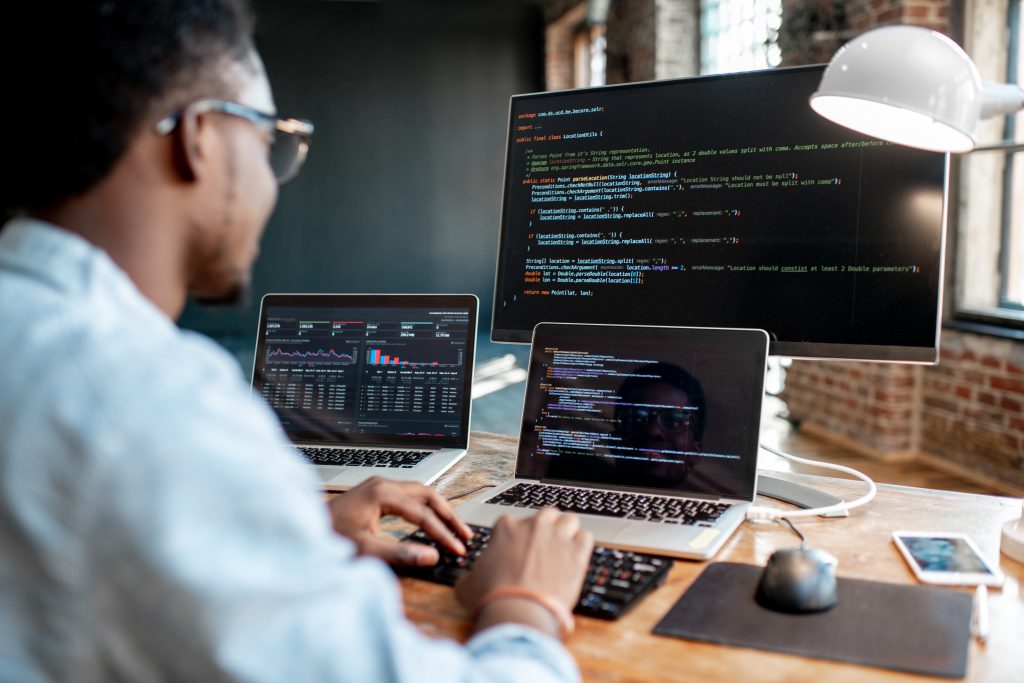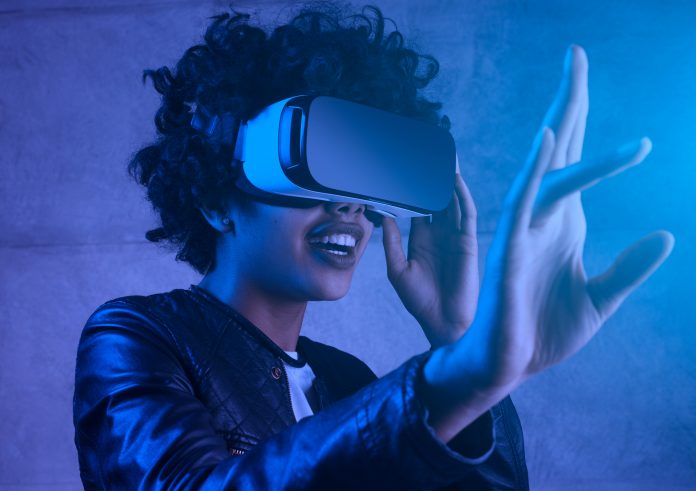People have become very used to the constant updates of applications and software, even those who aren’t very tech-savvy. However, this is just the tip of the iceberg when it comes to how emerging technologies affect our lives. Today’s accelerated development of technology and innovation far exceeds what we once thought of as fast. The game has changed. Disruptive technologies are emerging every day. The question is which ones will stay and alter every single aspect of life on the planet. It’s not possible to predict the future. However, what we can do is present the latest technology in 2019. Many of which will go on to influence the industry in 2020 as well.
Information about technology can be broken down into three main groups:
- The tech that allows for software development and innovation to emerge.
- Tech trends that will revolutionize interactions between people and machines.
- Security
We Are All Connected with Advanced Networks
Most people nowadays are used to dealing with annoying issues such as being out of data on a smartphone, laptop, or cloud storage. But, have you ever wondered how much data is accumulated daily on social media alone, through searches via browsers, or emails? Experts predict that by 2020, the quantity of data produced in the whole digital world will reach 44 zettabytes. That’s a staggering 44 trillion gigabytes. Data analytics is required to cope with the vast amounts of data produced. It is the foundation for smart applications, industry, and software development. Data-driven insights enhance machine learning and artificial intelligence (AI). At the same time, analyzing big data is also a challenge. Advanced analytics requires a complex environment and progressive platforms to perform effectively.
Here are some of the ways tech facilitates future innovation.
5G
Fifth-generation, cellular network tech is commonly known as 5G. It follows on from its predecessors, 2G, 3G, and 4G technologies. It is better, faster, and more effective than the wireless connections of the past, and it’s already here. Mobile carriers in the United States are introducing it in pilot cities, so next time you’re in New York, why not experience it yourself? The latest advancements are what you expect any device to have. If you’re getting a new smartphone, for example, it’ll be equipped with 5G, so don’t worry.
But what makes 5G better, and why is it so crucial to have it? First of all, it gives you speed. 4G currently is enough to run your favorite applications. Still, it won’t satisfy the needs of the more complicated tech available right now.
Moreover, 5G can handle many more devices that connect at the same time. We’re talking about one million pieces of tech per square meter. Such a large quantity is significant because of the ever-growing number of gadgets, sensors, and other pieces of tech exchanging data over the network.
Suggested Reading: 10 Ways to Lower Your Cell Phone Bill Today

Edge Computing
Technology trends show that the future will bring us applications serving the industry through process automation and decision making. That means a lot of data processing and predictive analytics for the machines. Currently, the time it takes for the data to move from the device to the cloud and back again is too long. Especially for the complex software development being talked about here. Moreover, the traffic is increasing at a fantastic rate, with growing numbers of connected devices communicating with the data centers.
Even though the network is improving, there are concerns that physically, the data centers won’t be able to handle so much data in the required time. Edge computing upgrades the cloud technology by allowing part of the data processing to be performed in a small cloud nearby. The idea is for the mini cloud to be close to the gadget. The best-case scenario is in the device or on the edge of it. Thus, part of the computing will be closer to the edge of the system.
To realize the full application of this technology, edge computing needs to address several questions. Experts need to evaluate security since the tech changes the approach in data exchange. It has to deliver a solution to a variety of device characteristics and requirements. Last but not least is to design reliable technology, so users don’t face any interruptions.
Also Read: How Much Does a Wedding Cost?
The Future of Interaction Between Machines, Data, and People
The way people live is and will continue to change. From the way we handle our finances or travel to carrying out everyday tasks and doing our jobs. For Star Trek fans, it’s a dream-come-true. For anyone unfamiliar with the popular show, think what it would be like if technology could create food you want. You’d be able to have it whenever you want it, on a whim just in front of you. Let’s explore what is already out there or on the way to becoming an integral part of our life.
VR, AR, and Mixed Reality
Virtually reality and augmented reality have been around for a while, and it looks like they’ll be sticking around for a little longer. What is the difference between VR and AR?
VR
Virtual reality (VR) is not real and is computer-simulated. To view it, you have to use additional hardware, usually in the form of a helmet-shaped display. What makes VR different from watching videos is that you are actually in the environment. Even better is that you’re able to interact with it. You might associate VR mainly with gaming and the world of entertainment. However, virtual reality has a high chance of becoming one of the significant technologies in education too. Training doctors to perform surgery or pilots to fly a plane are just a few examples.

AR
Augmented reality (AR) tech, on the other hand, allows people to have enhanced interaction with their surrounding environment. Usually, we experience AR through smartphone applications. The AR triggers could be pre-designed markers or our GPS location. Viewing our surroundings through the phone camera gives us an even better experience than what is already visible. On the screen, we can grasp not only the buildings but locations of restaurants or cafes if we are looking for one.
We can’t talk about augmented reality and not mention projection-based AR. These tech projects light directly onto a chosen surface, and we can interact with the light. Marketing experts are quite excited about this innovation and future developments. Imagine if you could see how your purchases will look in your home?
Mixing the virtual and the real world will change our learning habits. It will transform our towns into smart cities. More effective and life-like remote collaboration than before will also be possible.
Pro Tip: Got a Sad Wallet? Here’s How to Make Money
AI Assistants
Giving voice commands to Siri and Alexa are already interactions with tech to which we’ve become accustomed. However, communication still feels very machine-like and often fails. The good news is that the artificial intelligence behind our virtual assistants is developing fast. The goal is to improve its ability to recognize not only words but the semantic relations that lie behind them. Thus, we’ll move forward and begin conversing with them and having them as an invaluable helper, rather than a device.
Smart Bots
This category won’t be complete if we don’t talk about chatbots or smart bots. They also function as virtual assistants, bringing customer service support to the next level. Their channel of communication is the written word, but they still need to identify the intention behind a sentence. Assistant AI is different from other kinds of AI due to its conversation-centric approach based on data analytics.
The future lies in more sophisticated virtual assistants not only in their understanding of language but their speech abilities too. Personalization is the added value of AI. The bots or assistants adapt to a person’s needs without a single action on the human side. The next thing is assistants built into any smart device.
Robotic Process Automation (RPA)
There’s nothing new about process automation. If it weren’t for process automation, the industry wouldn’t look like it does now. The difference is involving robots, bots, or AI in the mechanics of the processes. And we are not talking about manual labor. Most of our daily activities stem from routine, internal rules, and repetition. It is valid for all employee levels, even CEOs. Robots can observe our behavior, identify patterns, and regulations. Based on their predictive analytics, the next step is they start performing regular tasks for us.
Advantages
For business technology, RPA has many benefits. Its non-intrusive approach comes first. Unlike other software automation processes, RPA works directly in the user’s interface. It doesn’t need complex back-end programming. Generally speaking, investment in RPA is not as significant as you might expect.
Moreover, it doesn’t affect any other underlying systems. Another positive feature is that RPA is an adaptable technology in an ever-changing business environment. Finally, case studies show that the return of investment (ROI) is rapid. Depending on the industry and complexity, 90% automation of a process could be achieved in no more than three weeks, with an ROI in just six months.
Uses
What are the possible jobs for these future workers? Industries that are dealing with documentation and forms can implement RPA. For example, entering data from an invoice or managing sick leave certificates. Credit card institutions use RPA for improving and automating the process of checking customer’s applications. AI is already researching information about the client automatically. Traditionally, an employee would have to do the task manually, leaving less time for engaging with the customer. There is also a place for RPA in the supply chain.
Also Read: How to Build a Budget, Step by Step
Internet of Things (IoT)
The Internet of Things is possibly the most tangible of all tech listed here so far, especially for the consumer. IoT is about increasing the number of items that are connected and smart. It is already happening. Almost every new piece of tech out there has Wi-Fi and provides an opportunity to join the network. It might be a pre-heated oven or a fridge making real-time updates to a shopping list. We reached an impressive 8.4 billion IoT items in 2017. Still, we are not officially in the era of the Internet of Things. Predictions show the number more than tripling to 30 billion IoT devices by next year.
Current Uses
A smart lock already exists that allows us to check if we locked the door in the morning or unlock it from afar for an arriving guest. And it goes beyond home appliances. The way of using energy in our everyday life is changing. Smart plugs help us save energy by switching off when you don’t use the plug. Fitness trackers are part of the trend. These wearable devices collect information relating to health through sensors. The gadget sends the data to the relevant doctor for analysis and treatment if needed.
Future of Driving
Autonomous driving relies on artificial intelligence, becoming more and more sophisticated. Improvements include environment data analytics developing insight abilities and making decisions autonomously. 5G and edge computing are critical features of the infrastructure required. Without it, cars will react too slowly to what’s happening around them. The third element here is equipping more devices with sensors to collect data and connecting them wirelessly. Further requirements are for allowing vehicle-to-vehicle communication and also receiving data about road conditions, traffic information, or weather conditions, for example.
Machine Learning (ML)
Machine learning is fundamental for robotic process automation, improving virtual assistants, and autonomous cars. ML technology is the ability of a machine to learn to do things that were not in its original programming. The machine achieves it by observing and discovering behavioral models and patterns through data insights. In time, a computer can predict what the human would do and perform the task or process in advance.
The foundation of machine learning technologies lies in recreating the neural networks of the human brain function. Millions of computer neurons connect. These neurons receive data in the form of text, audio, or picture and learn from it.
Deep Learning
ML includes several approaches and working methods. Deep learning is one of the most common techniques. It answers the theory of information bottleneck by allowing machines to compress data in a way that still preserves the information about what the data means. The machines extract data on several levels, and with each new level, the device is learning. The result is the transformation of the original input data into a more complex and abstract depiction. If we take the example of an image, the lower levels represent the size and form of the image. The higher learning levels describe what the image depicts.
Reinforcement Learning
Reinforcement learning is another ML approach. The AI learns through observing, taking action, and receiving rewards. The neural network improves its performance by trying to carry out the task in different ways. AI bases its decisions on the knowledge and rewards gathered from before.
An example is a robot learning how to handle an object. The task at hand is different than a robot in a factory that has to execute precisely defined actions with an item on the assembly line. Reinforcement learning is about developing robots to decide how to manipulate the said object. They learn by randomly trying out different approaches. They then analyze the results, thereby forming stronger neural connections. Dactyl, the Robotic Machine Learning-Supported Picker, is an excellent practical example.
Advancing AI through what we call training is hindered by the hard-to-overcome challenges of allowing machines to learn in the real environment. Thus, the training needs to happen in a synthetic environment, provided there is enough training data. The latter is still not enough to unlock AI’s full potential.
What About Security?
Feeling safe is a basic human need. It extends not only to the physical and emotional world of a person but to the virtual world as well. People are becoming more concerned with privacy and security breaches in the digital universe than ever before. After all, great technological achievements in the last few years have gone hand in glove with a shocking number of data breaches affecting millions of people.

Emerging technologies represent significant advancements. Still, they pose a risk of misuse and having cracks just waiting for hackers to attack. The rise in IoT means that every producer in the world will start constructing smart and connected devices. The question remains, would these new products provide the necessary security?
Another aspect to consider is how technology will change the way we perceive information and how we validate its quality. We are already at a disadvantage having to deal with fake news on social media. Imagine the endless opportunities for refined manipulation that are created by the combination of augmented and mixed realities, with personalization and automation.
Blockchain
The hype cycle surrounding Blockchain technology is now over. But that doesn’t mean the tech itself is dead. On the contrary, without the hysteria and noisiness, Blockchain is proving itself to be one of the highly secured technologies out there. Initially created to serve the cryptocurrencies market, this innovation gets more extensive use in the financial, banking, and health care sectors.
Blockchain might also be a game-changer in the security of digital assets. The technology is protected data. It’s not possible to alter it. You can only add more data to it. Metaphorically speaking, it is a chain of data blocks. It could be public or private, but it guarantees transactions and records transparency. Moreover, the digital ledger functions on a decentralized level, without involving regulative institutions.
Regardless of its outstanding features, Blockchain appeals to the industry because of the concept behind it. It could be applied not only in accounting but also in stocks trading, identity certification, HR management, and many other areas. The upcoming months are going to be crucial for finding a way to apply disruptive technology on the cross-sectoral level.
Washed Away Frontiers
It is getting harder and harder to define the borders between technologies. There is no single point that defines where one kind of tech starts, and the other one ends. The future lies in interconnectedness and encouraging collaboration with regards to technology development and learning. In the past, businesses had the luxury of time for analyzing how technology developed before deciding to implement it. Nowadays, if you wait for it to settle in, you’ve already fallen behind. The industry is about embracing changes and reinventing itself constantly.
Technology in our Future
Technology is part of our future, but blindly embracing it is not the way to go. It needs to go hand in hand with a reflection on how we want to live, work, and function as a society. Another essential aspect to consider is the impact of technology on nature. We are the ones to choose which technologies to develop. It is up to humans to take responsibility for our decisions. The recently opened Futurium museum in Berlin, Germany, is all about presenting and exploring people, nature, and technology aspects of the future.
Are there any aspects of technology about which you’re uncertain? Would you rather live your life without any of the trappings technology brings? Leave your comments below; we’d love to hear what you think.
Similar Topics: Best News Apps in August 2020

